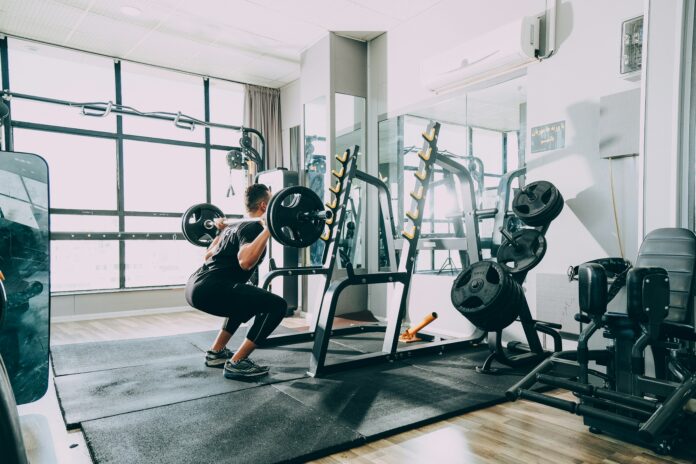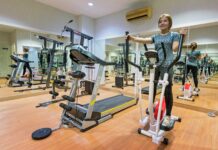Table of Contents
Functional fitness has become a popular buzzword in the fitness world. The idea is simple: train your body to perform daily activities with ease and efficiency. But is your functional fitness training actually delivering on this promise? In this article, we’ll explore how functional fitness works, common pitfalls in training, and whether your routine is truly benefiting your everyday life.
Understanding Functional Fitness
What is Functional Fitness?
Functional fitness refers to exercises that mimic the movements we perform in daily life. The goal is to enhance overall strength, balance, and flexibility, making everyday tasks easier. Unlike traditional weightlifting, which might focus on isolated muscle groups, functional fitness involves compound movements that engage multiple muscle groups simultaneously.
Examples of Functional Exercises
Common functional exercises include squats, lunges, push-ups, and deadlifts. These exercises improve your ability to perform activities like climbing stairs, lifting groceries, or playing with your kids. The idea is to build a strong, adaptable body that can handle various physical demands.
Assessing Your Training
Are Your Exercises Relevant?
One key to effective functional fitness is ensuring that your exercises are relevant to your daily life. For instance, if you find yourself frequently bending down to pick things up, exercises like deadlifts and kettlebell swings are beneficial. However, if your routine includes movements that don’t align with your daily activities, you might not see the practical benefits you’re hoping for.
Incorporating Real-Life Movements
To evaluate whether your functional fitness training is helping, consider how well your exercises translate to real-life movements. For example, if you’re doing exercises that improve your balance and coordination, you should notice it when walking on uneven surfaces or carrying heavy items. If you’re not seeing these improvements, it might be time to reassess your routine.
Common Pitfalls in Functional Fitness
Lack of Variation
One common issue with functional fitness training is the lack of variety. Repeating the same exercises can lead to a plateau, where your progress stalls. To avoid this, incorporate a range of movements that challenge different muscle groups and mimic various daily tasks. For example, if you’ve been focusing solely on squats, try adding lunges, step-ups, or balance exercises to your routine.
Ignoring Mobility and Flexibility
Another pitfall is neglecting mobility and flexibility. Functional fitness isn’t just about strength; it also involves the ability to move your joints through a full range of motion. Incorporate stretching and mobility exercises into your routine to enhance your flexibility and reduce the risk of injury. Yoga or dynamic stretching routines can be great additions to your functional fitness program.
Overemphasis on Intensity
While intensity is important, an overemphasis on pushing yourself too hard can lead to burnout or injury. Functional fitness should improve your overall well-being, not just make you sweat. Ensure your routine includes a balance of intensity, recovery, and proper form to maximize benefits without risking your health.
Evaluating Your Progress
Tracking Improvements in Daily Life
To determine if your functional fitness training is making a difference, pay attention to how you feel in your daily activities. Are you moving more easily? Do you feel stronger or more coordinated? For instance, if you used to struggle with carrying groceries or lifting objects, and now it feels easier, that’s a positive sign your training is effective.
Seeking Feedback and Adjustments
Don’t be afraid to seek feedback from a fitness professional or trainer. They can help assess your routine and make necessary adjustments to better align with your goals. A professional can also provide insights into areas where you might need additional focus or variation in your training.
Tips for Effective Functional Fitness Training
Set Realistic Goals
Setting clear, achievable goals is crucial for effective functional fitness training. Determine what specific aspects of your daily life you want to improve, such as carrying heavy items or climbing stairs. Tailor your exercises to these goals to ensure that your training is focused and relevant.
Incorporate Compound Movements
Focus on compound movements that engage multiple muscle groups simultaneously. Exercises like squats, lunges, push-ups, and rows are excellent for building functional strength and improving your ability to perform everyday tasks.
Mix in Balance and Coordination
Balance and coordination are essential components of functional fitness. Incorporate exercises that challenge your stability, such as single-leg stands, balance boards, or stability ball exercises. Improving your balance and coordination will help you handle various physical challenges with greater ease.
Listen to Your Body
Pay attention to how your body responds to your training. If you experience pain or discomfort, it might be a sign that your routine needs adjustment. Prioritize proper form and technique to prevent injuries and ensure that your exercises are beneficial.
Conclusion
Functional fitness training can be a powerful tool for improving your everyday life. By focusing on exercises that mimic real-world movements and addressing common pitfalls, you can enhance your strength, balance, and flexibility. Evaluate your training regularly to ensure it aligns with your daily activities and make adjustments as needed. With the right approach, functional fitness can help you perform daily tasks with ease and boost your overall well-being.
Call to Action
Ready to make the most of your functional fitness training? Start by assessing your current routine and incorporating exercises that align with your daily activities. Remember, effective training is all about balance and relevance. Stay motivated, listen to your body, and keep pushing toward your fitness goals!





